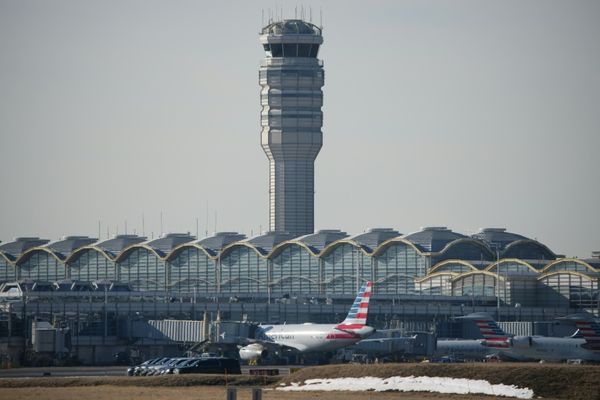
July 18, 2018 marks Nelson Mandela’s centenary, and his native homeland of South Africa is commemorating this occasion not only through events, but also with a digital map tracing his lifelong journey.
South African Tourism and the Nelson Mandela Foundation have worked together in updating Madiba’s Journey, an app listing 100 locations around South Africa tied to Mandela and accessible to the general public.
The app’s title refers to Mandela’s Xhosa clan name, Madiba.
In timing with his centenary, I contacted South African Tourism for their recommendations on the 10 best places in South Africa to learn more about Mandela, both as an individual and a public figure.
Here is what their staff suggested.

Robben Island
Accessible by a ferry ride via Cape Town, from the Nelson Mandela Gateway at the V&A Waterfront, Robben Island is where Mandela spent 18 out of 27 years in prison. Other political and event criminal prisoners were sent here too. Tours of Robben Island include a viewing of Mandela’s prison cell and other remaining facilities telling more about the island’s vast 500-year history (it was also a general infirmary and a military base).

Nelson Mandela Capture Site
In the province of KwaZulu-Natal, near the town of Howick, these grounds mark the area in which Mandela’s 27-year incarceration would begin. On August 6, 1952, Mandela was pulled over by anti-apartheid police; he pretended to be a chauffeur but was still arrested. At the capture site, a pathway aligned with plaques listing historic dates and facts leads to a visually striking facial statue of Mandela.

Liliesleaf
In Johannesburg’s suburb of Rivonia, this farm served as a place of refuge for African National Congress leaders, and also was where Mandela went into hiding by posing as a farm worker. On July 11, 1963, after being used for almost two years, security police raided the property and arrested many leaders. Mandela was already serving a different sentence in prison at the time, but he was also brought to trial for his connection to Liliesleaf. Liliesleaf became a public historic site in June 2008.

Mandela House on Vilakazi Street
In Soweto, a township in Johannesburg, this museum was once the private home for Mandela and his first wife, Evelyn Ntoko Mase, until their divorce in 1958, and then with his second wife, Winnie Madikizela-Mandela. Yet he spent little time here. Becoming heavily involved with political activities, and having to be on the run, Mandela came back to this house in 1990 briefly after being released from Robben Island. The Mandela family resided here until the mid-1990s, when the home became a public heritage site. Neat fact: Archbishop Desmond Tutu lived on the same street.

Chancellor House and the Shadow Boxer Statue
Also in Johannesburg, these two buildings at 25 Fox Street show two different sides of Mandela. The Chancellor House is the location where Mandela and Oliver Tambo, an anti-apartheid leader, conducted their law firm, Mandela & Tambo. It’s not open to the public; instead its windows carry a timeline of events relating to Mandela and Tambo and moments involving anti-apartheid efforts. Across the street, gaze at a statue of a young Mandela as an amateur boxer.

City Hall and Grand Parade
Cape Town City Hall, a Italian-Renaissance style, sandstone building, is where Mandela delivered his first speech as a free man on the balcony on February 11, 1990. Crowds gathered onto the Grand Parade (the main public square) to hear him speak. For his centenary, a statue of Mandela will be unveiled at the city hall, symbolizing that moment.

Voting Line Sculpture
At the Dorkin Reserve, in the Eastern Cape’s Port Elizabeth, this lineup of sculpted individuals symbolizes a historic date for South Africa. On April 27, 1994, the country held its first all-race, democratic election after decades of apartheid. The figures are said to represent people of various backgrounds waiting to cast their ballots. Among the voters that day was Mandela himself.

Constitution Hill
This Johannesburg complex was a former prison and military fort that held men and women from all backgrounds and convictions with treatment varying according to apartheid stances. Noted prisoners not only included Mandela, but also Mahatma Gandhi and Winnie Madikizela-Mandela. See The Old Fort, which held white prisoners; Number Four, which imprisoned men of color; a Women’s Jail; and The Constitutional Court, which handed down significant judgments on high-profile cases.

Apartheid Museum
As a teaching tool, this museum, also in Johannesburg, gives a solid understanding of what life in 20thcentury South Africa was like under the system of apartheid and what the country’s post-apartheid future can hold. Over 20 exhibits guide visitors through various aspects of racial discrimination with films, artifacts, photographs and displayed text of personal accounts; Mandela is also prominently featured.

Nelson Mandela Museum
Along the Eastern Cape, this museum is comprised of two separate structures, with each giving a thorough perspective on the man for whom this attraction gets its name from – reflecting on both his youth and adulthood. These venues are the Nelson Mandela Building, in the city of Mthata, and Nelson Mandela Youth and Heritage Centre in Qunu, the rural village that Mandela grew up in.







